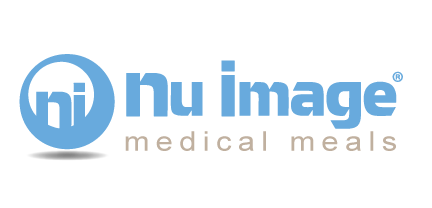Are Trans Fats Really That Bad?
Sep 23, 2011
Knowing what to eat and what to avoid to be healthy can be confusing at best; especially when it comes to fat. For years we were told to avoid eating any fat at all. Then we were told that it’s important we eat some "good" fats, but to stay away from "bad" fats. And no matter what, never, ever eat trans fats. Why? What exactly are trans fats? And are trans fats really that bad for us?
Yes!
What are Trans Fats?
Trans fats occur both in nature and in the lab. The naturally occurring trans fats can be found in relatively small amounts in dairy and meat products. But it’s not the naturally occurring trans fats that are so dangerous; it’s the man made ones we need to avoid. Trans fats are basically vegetable fats that have been changed chemically whereby hydrogen is added to vegetable oil through a process known as hydrogenation. It is this process that takes a benign fat, such as corn oil or soybean oil, and turns it dangerous.
How are Trans Fats used?
Trans fats are an inexpensive food additive that is highly effective at its job: making foods taste good. The smooth texture trans fats give food makes it a particular favorite for packaged baked goods. It is also trans fats’ preservative quality, which gives foods a longer shelf life, that many manufacturers like. For restaurants, especially fast-food chains, trans fats are great for deep-frying foods because the same batch of fat can be used repeatedly in commercial fryers.
So, why are Trans Fats so bad for us?
While they may please our taste buds and our wallets, trans fats wreak havoc on our overall wellbeing and in particular our arteries, where they basically turn to sludge. Think about how bacon grease hardens up after awhile, that’s what trans fats are doing in our arteries: hardening up and blocking blood flow. Over time this artery blockage can lead to heart disease and/or a stroke.
Trans fats also raise bad (LDL) cholesterol levels and lower good (HDL) cholesterol levels. LDL and HDL, can be confusing, but basically:-
Low-density lipoprotein (LDL) is the “bad” cholesterol because it transports cholesterol throughout the body enabling it to build up in the artery walls making them hard and narrow. You can remember LDL is bad so you only want a little of it in your body.
-
High-density lipoprotein (HDL) is the “good" cholesterol because it helps to clean up excess cholesterol found in the bloodstream and takes it back to the liver to be processed and eliminated. HDL is good and we want high levels of it in our bodies.
Trans Fats also causes inflammation. Research has shown that trans fat appears to cause damage to the cells lining the blood vessels, leading to inflammation. And if not treated, over time inflammation can lead to a number of illnesses including: arthritis, obesity, type-2 diabetes, heart disease, cancer, asthma and allergies.
While not conclusive, there is growing evidence that consuming excessive trans fats plays a roll in other chronic health problems such as:
-
Alzheimer's Disease
-
Obesity
-
Liver Dysfunction
-
Infertility in women
-
Depression
How can we avoid Trans Fats?
Food labels are a good place to start when trying to identify and avoid trans fats. Since 2006, the US Food and Drug Administration has mandated that all food manufacturers must list trans fat (i.e., trans fatty acids) on the Nutrition Facts and Supplement Facts panels. (sample below)
However, it’s important to recognize that the FDA’s definition of “zero trans fats” does not necessarily mean a product has absolutely no trans fat. According to the FDA, a product claiming to have zero trans fat can actually contain up to a half gram. A half gram may not sound like a lot, but half gram in several products that you consume throughout the day do add up.Also, a wise consumer needs to know that not all trans fats are called “trans fats” but go by other names such as: "partially hydrogenated vegetable oil" and "vegetable shortening" so be sure to avoid foods with these items in the ingredient list.
And then there’s the issue of non-labled food. Obviously not everything we eat comes with a nice, clear ingredient label on it. So to help navigate the unlabled arena, keep in mind the following.General tips on how to avoid Tans Fats:
-
Avoid eating commercially prepared baked foods such as cookies, pies, donuts, etc., snack foods and processed foods, unless they are from Diet-to-Go (we don't use trans fats).
-
When eating out, avoid deep-fried foods (since many restaurants still use partially hydrogenated oils in their fryers) as well as baked desserts.
-
Opt for fish as most fish do not have naturally occuring trans fats like meat does. And as an added bonus, some fish, such as mackerel, sardines, and salmon, contain omega-3 fatty acids, the good fat.
Conclusion
Eating right isn’t always easy. We know. But understanding what foods to avoid and why goes a long way in keeping us healthy. While all fats are high in calories, and should be consumed in moderation (even good fats), trans fats are downright dangerous. They clog our arteries and make our heart work extra hard. Trans fats damage our blood cells and put us at risk for a whole host of illnesses. Trans fats really are that bad.
Author: Sue Ridgeway-









